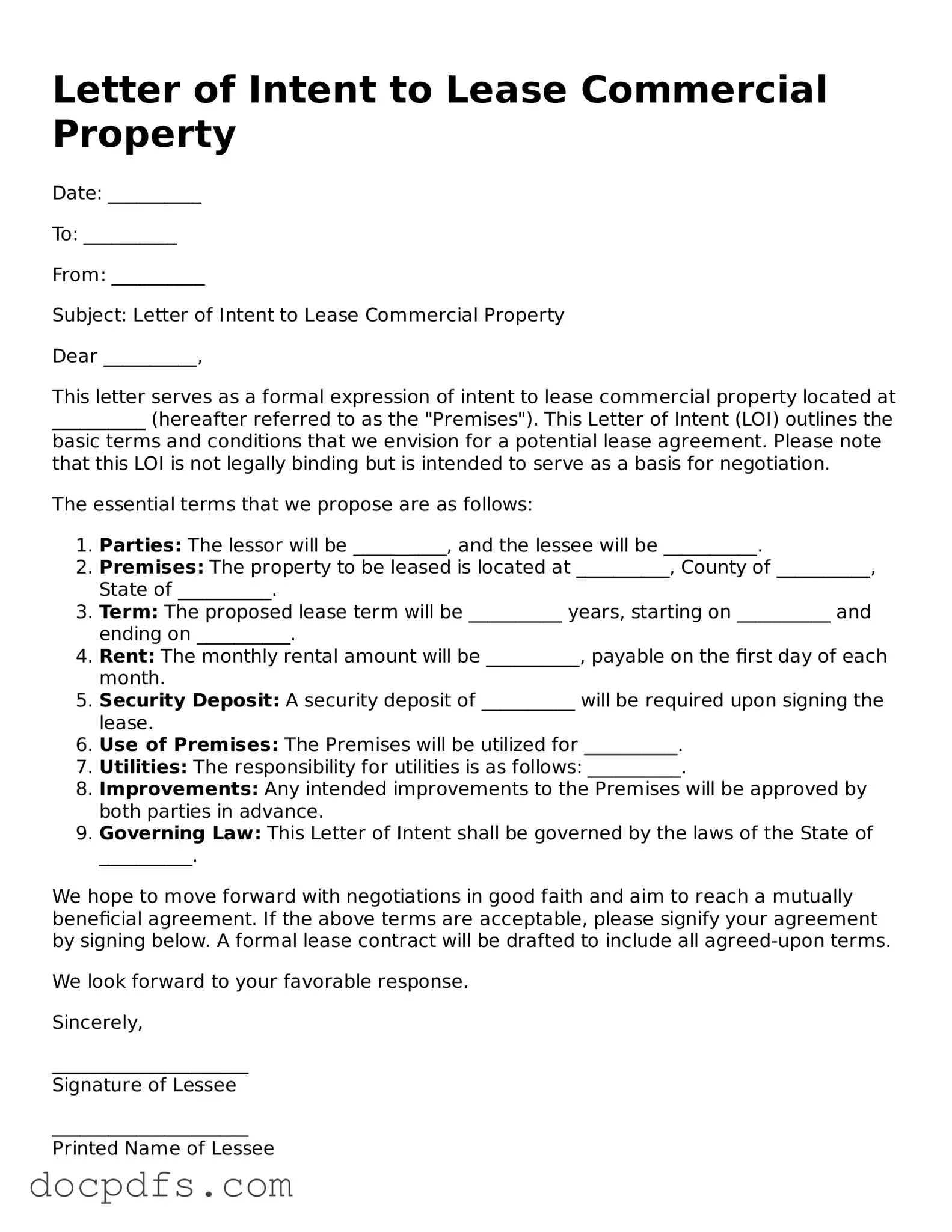What is a Letter of Intent to Lease Commercial Property?
A Letter of Intent (LOI) to lease commercial property is a preliminary document that outlines the basic terms and conditions of a potential lease agreement between a landlord and a prospective tenant. This document serves as a foundation for negotiations and typically includes essential elements such as the proposed rental rate, lease duration, and any specific requirements or conditions that either party may have. While an LOI is not legally binding, it reflects the intent of both parties to move forward with the leasing process.
Why is a Letter of Intent important in commercial leasing?
The importance of a Letter of Intent lies in its ability to clarify the expectations of both parties before entering into a formal lease agreement. By detailing the key terms, the LOI helps to prevent misunderstandings and ensures that both the landlord and tenant are on the same page. Additionally, it can expedite the leasing process by providing a framework that can be expanded upon in the final lease document. Furthermore, having a written record of the agreed-upon terms can serve as a reference point in case disputes arise later.
What should be included in a Letter of Intent?
A comprehensive Letter of Intent typically includes the following elements:
-
Property Description:
A brief description of the commercial property being leased, including its address and any specific features.
-
Proposed Lease Terms:
Key terms such as the proposed rental amount, lease duration, renewal options, and any escalation clauses.
-
Use of Premises:
A statement detailing how the tenant intends to use the property, which is crucial for the landlord to ensure compliance with zoning laws.
-
Deposit and Fees:
Information regarding any initial deposits or fees that may be required before the lease is finalized.
-
Contingencies:
Any conditions that must be met before the lease can be executed, such as obtaining financing or necessary permits.
-
Timeline:
An outline of the proposed timeline for finalizing the lease agreement.
Is a Letter of Intent legally binding?
Generally, a Letter of Intent is not legally binding, meaning that it does not create a legal obligation for either party to proceed with the lease. However, some provisions within the LOI may be binding, such as confidentiality clauses or exclusivity agreements. It is essential for both parties to understand which sections of the LOI are intended to be binding and which are not. Legal counsel can provide clarity on this matter and ensure that the document accurately reflects the parties' intentions.
How does a Letter of Intent differ from a lease agreement?
A Letter of Intent differs from a lease agreement in that it serves as a preliminary outline rather than a formal contract. While a lease agreement is a comprehensive legal document that details all terms and conditions of the rental arrangement, the LOI is a more informal summary that sets the stage for negotiations. The lease agreement will include more specific legal language, obligations, and rights of both parties, whereas the LOI focuses on the essential elements that will be negotiated further.
What should I do after signing a Letter of Intent?
After signing a Letter of Intent, the next steps typically involve negotiating the final lease agreement based on the terms outlined in the LOI. Both parties should engage in discussions to address any remaining issues and finalize the details. It is advisable for both the landlord and tenant to seek legal advice during this phase to ensure that the final lease accurately reflects their intentions and protects their interests. Once the lease agreement is drafted and reviewed, both parties will sign it, making the lease legally binding.
